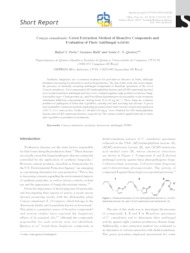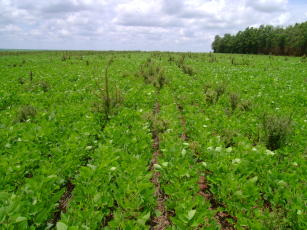Conyza canadensis: green extraction method of bioactive compounds and evaluation of their antifungal activity.
Conyza canadensis: green extraction method of bioactive compounds and evaluation of their antifungal activity.
Author(s): PORTO, R. S.; RATH, S.; QUEIROZ, S. C. do N. de
Summary: Abastrac: Synthetic fungicides are a common treatment for post-harvest diseases in fruits, although demand is increasing for alternatives such as biopesticides. The aim of this work was to investigate the presence of naturally occurring antifungal compounds in Brazilian specimens of the weed Conyza canadensis. Two compounds [(4Z)-lachnophyllum lactone and (4Z,8Z)-matricaria lactone] were isolated and their antifungal activities were evaluated against eight postharvest disease fungi. Aspergillus niger, Cladosporium sp., and Penicillium digitatum proved susceptible to the treatment (minimum inhibitory concentrations varying from 32 to 64 µg mL-1). These fungi are common postharvest pathogens of fruits and vegetables, causing rots and secreting mycotoxins. A green and sustainable extraction method employing pressurized hot water was developed and optimized (100 °C, 4 × 1 min cycles). Yields of 1.46 and 0.24 mg g-1 were obtained for (4Z)-lachnophyllum lactone and (4Z,8Z)-matricaria lactone, respectively. The extract could be applied directly to fruits and vegetables in postharvest treatments.
Publication year: 2017
Types of publication: Journal article
Unit: Embrapa Environment
Observation
Some of Embrapa's publications are published as ePub files. To read them, use or download one of the following free software options to your computer or mobile device. Android: Google Play Books; IOS: iBooks; Windows and Linux: Calibre.
Access other publications
Access the Agricultural Research Database (BDPA) to consult Embrapa's full library collection and records.
Visit Embrapa Bookstore to purchase books and other publications sold by Embrapa.


